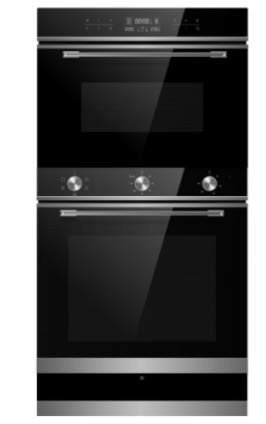11 Ways To Totally Defy Your Oven And Hob
Understanding Ovens and Hobs: A Comprehensive Guide
When it concerns cooking appliances, ovens and hobs are amongst the most vital tools found in contemporary cooking areas. They play essential functions in meal preparation, transforming raw ingredients into tasty dishes. Comprehending the distinctions in between numerous kinds of ovens and hobs and how to choose the ideal one can make a significant difference in cooking performance and food quality.
This article explores ovens and hobs in information, offering insights into their types, functions, advantages, and typical FAQs. Whether you are an experienced chef or an amateur cook, this information will assist you make notified decisions for your culinary needs.
Kinds of Ovens
Ovens come in several types, each designed for particular cooking methods and designs. Here is a comprehensive take a look at the most typical types of ovens:
Type of Oven
Description
Best For
Standard Oven
Utilizes heating components situated at the top and bottom for even cooking.
Baking, roasting, and general cooking
Stove
Functions a fan that circulates hot air for quick and even cooking.
Baking pastries and cookies, roasting meats
Steam Oven
Utilizes steam to prepare food, preserving wetness and nutrients.
Veggies and fish
Microwave
Rapidly cooks food using microwave radiation.
Reheating and fast meals
Wall Oven
Built directly into the wall for space-saving cooking options.
Little cooking areas and modern-day styles
Ability Level
Offers multiple cooking modes consisting of baking, broiling, and toasting.
Flexible cooking requires
Kinds of Hobs
Hobs, also understood as cooktops, can be found in different types based upon their fuel source and design. Understanding these choices can assist in finding the best fit for your kitchen setup:
Type of Hob
Description
Best For
Gas Hob
Uses gas flames for cooking, supplying instant heat control.
Conventional cooking techniques
Electric Hob
Utilizes electric coils or induction aspects to heat pots and pans.
Even heat circulation
Induction Hob
Utilizes electro-magnetic energy to straight warm pots, offering fast and effective cooking.
Energy-efficient cooking
Strong Plate Hob
A kind of electric hob with solid plates that requires time to warm up but keeps heat well.
Slow cooking
Ceramic Hob
Functions a glass-ceramic surface area permitting for easy cleansing, with electric heating elements listed below.
Aesthetic appeal
Factors to Consider When Choosing an Oven and Hob
Choosing the ideal oven and hob combination requires cautious consideration of a number of elements. Below is a list of important aspects to bear in mind:
Cooking Style
- Are you an everyday cook or a periodic baker?
- Do you choose steaming or frying?
Kitchen Size
- What space is offered in your kitchen for the home appliances?
- Will you require built-in or freestanding models?
Fuel Source
- Do you have access to gas, or would you prefer electric?
- Are you interested in induction cooking innovation?
Spending plan
- What is your spending plan for acquiring an oven and hob?
- Are you considering a high-end design or a more budget-friendly option?
Energy Efficiency
- Are you seeking to decrease your energy usage?
- Do you choose home appliances that come with high-efficiency rankings?
Benefits of Ovens and Hobs
Both ovens and hobs bring unique advantages to the kitchen. Here's a summary of some benefits:
Ovens:
- Versatility: Able to handle a large range of cooking techniques from baking to roasting and broiling.
- Constant Results: Even heat distribution supplies reputable cooking outcomes.
- Large Capacity: Ideal for large meals and batch cooking.
Hobs:
- Control: Gas hobs provide rapid heat modifications, beneficial for exact cooking.
- Effectiveness: Induction hobs are known for their quicker heat-up energy and times performance.
- Independent Cooking: Multiple hobs allow for cooking several meals all at once.
Choosing the best ovens and hobs is essential for anybody aiming to boost their cooking abilities and kitchen effectiveness. By comprehending Online Cooker Sales of each appliance, alongside their advantages and functions, customers can make informed choices that deal with their cooking practices and preferences.
As cooking areas evolve, so do the technologies surrounding cooking devices. Buying the ideal combination of an oven and hob can cause much better cooking experiences, greater food quality, and even pleasurable time spent in the kitchen.
Regularly Asked Questions (FAQs)
What is the distinction in between convection and conventional ovens?
- A stove uses a fan to distribute air for even cooking, while a standard oven relies just on the top and bottom heating components.
How do induction hobs work?
- Induction hobs use electro-magnetic fields to straight warm pots and pans made from magnetic materials, leading to quicker cooking times and more energy effectiveness.
Are gas hobs more secure than electric hobs?
- Security depends upon use and installation. Gas hobs require correct ventilation and can present a fire danger, while electric hobs might pose dangers of burns due to their hot surface areas.
Can I bake in a steam oven?
- Yes, a steam oven can be utilized for baking, frequently leading to moister and fluffier baked goods, particularly breads and pastries.
What should I try to find in an integrated oven?
- Try to find functions like capability, cooking modes, energy performance ratings, and ease of cleaning.
By considering the info and guides offered in this post, readers can quickly navigate the world of ovens and hobs, guaranteeing that they choose the very best appliances to match their culinary requirements.
